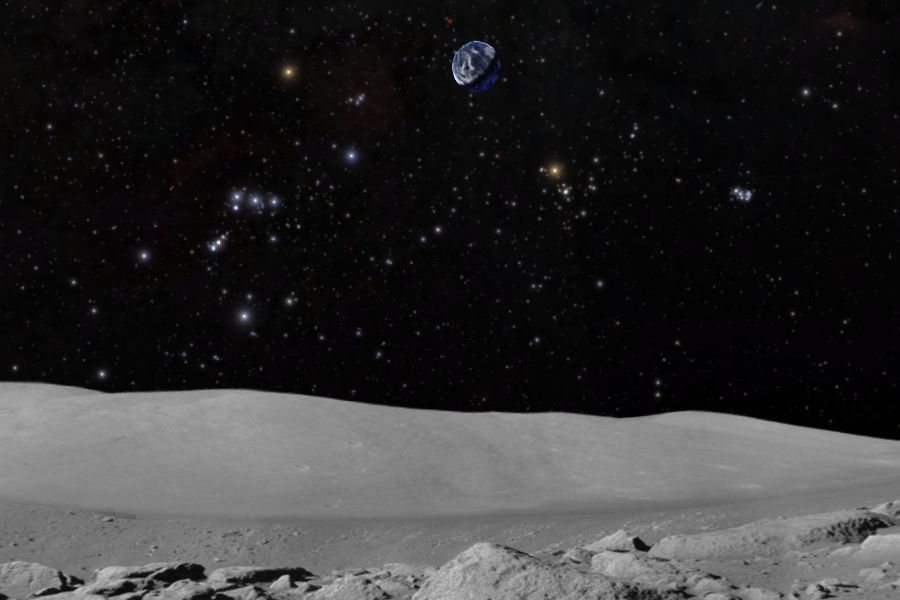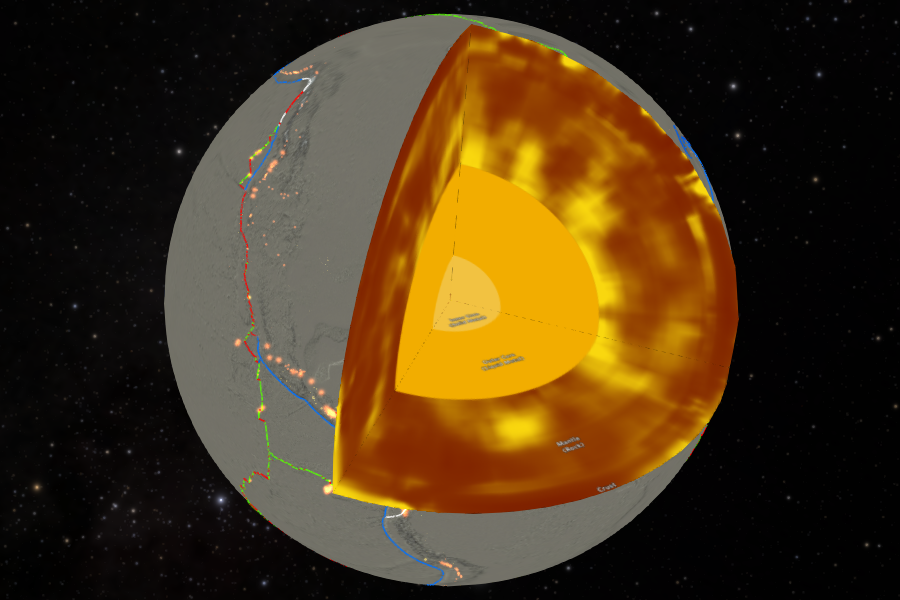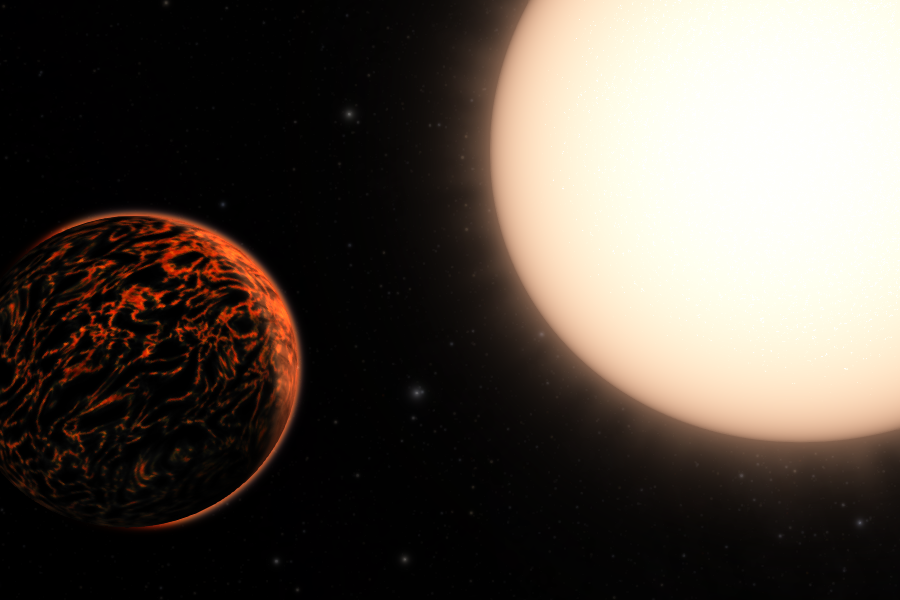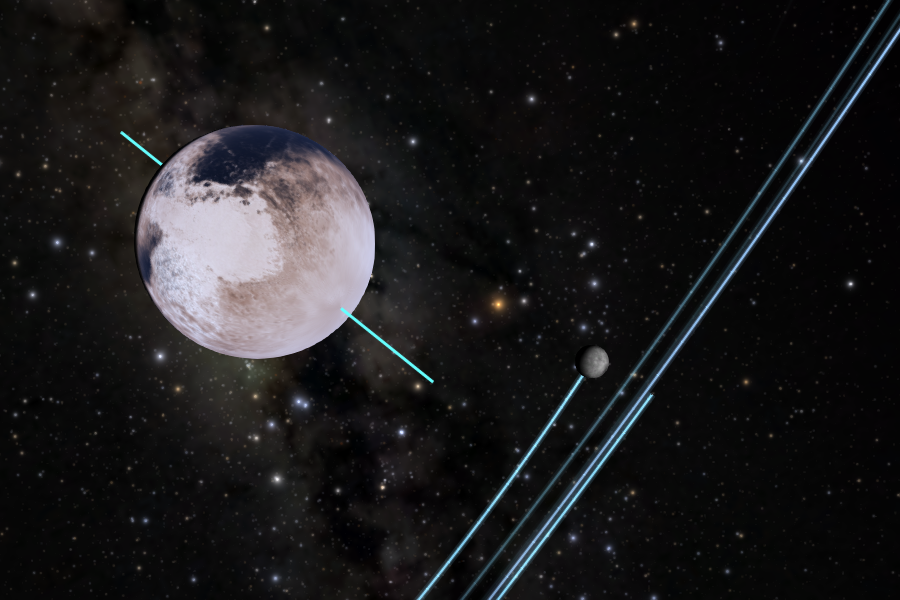Change can be scary. I think it can be especially scary to planetarians, in our small, insular industry, with a lot of traditions and loud voices. This isn’t to say there isn’t a lot of amazing experimentation and innovation, but, when we found it was time to update Morrison Planetarium’s school shows, those of us on the planetarium team revising them felt nervous. We were going down a route that felt like a total mix-up of all the school shows we’d done before, and we weren’t sure it was going to work.
Months after we started, I sat in the back row on the first presentation of our new 3rd-5th grade show, and almost immediately the cheers, laughter, and participation of the students put my mind at ease. Our experiment had worked.

One of several demos on the Earth’s annual motion and its effects on the sky.
The project began because, realistically, we were overdue to update our school shows. Given the busy schedule at the California Academy of Sciences we dedicate our first hour of the day to a live presentation for school audiences. Often many classes are grouped together to help fill our 300 seat theater. Careful scheduling lets us categorize them into three groups: Kindergarten through second grade students; third through fifth; and sixth through eighth grade. As California moved to the Next Generation Science Standards topics shuffled into new grade levels, leaving the standards covered in our existing shows way off target and the entire mode of instruction was different. As I think has long been the goal of science education there was a much more clear motion from memorization of the facts of science to learning the process of science.
Astronomy, as, perhaps, the oldest science, is definitely full of memorizable facts. I was one of those kids who absorbed them during my elementary education, but I’ve gotten to experience first hand that memorizing facts is not effective universal pedagogy. I’ve also heard it said before--I think now much less true--that astronomy is an observational science, not an experimental one. Looking at the standards and cross-cutting concepts with our education experts at the Academy though, a vision for our new school shows emerged. What if we used the planetarium to run astronomy experiments?

Comparing the size and rotation of Earth and Venus.
Approaching the material with experiments in mind, and the cross-cutting concept of using models as part of our guide we began trying out versions of the show that were exactly that. Using the power of Uniview we could change the structure and conditions of the planets, as well as compare the tilt, orbit and composition of the planets in our solar system with each other and more beyond. With the advice and guidance of our experienced education team we worked on guidelines for how the presenter could interact with the audience too. Running these experiments to see how planets are different from each other required the students to make predictions and we were guided on what topics would be effective for students to shout together or engage in think-pair-share. Our team was given guidance on how to control these large, excited audiences, and building in long pauses to let students come to their own conclusions and share them with their neighbors.

Observing one month of Earth's motion from the Moon. Students compare it to the motion of the moon they just watched from the sky above San Francisco.
The central experiment of the 3rd-5th grade show is understanding the observable effects of the motion of objects in the solar system. The show starts watching the day/night cycle from San Francisco during the different seasons of the year. We also take some time to watch the motion of the moon and see which constellations appear in the sky. We then leave for space, scaling the Earth and adding reference coordinates, to let us see what’s happening with the position of the Earth, Moon and Sun that creates the sky we observe. We then treat the Moon and a selection of other planets as experiment: what is a day like on the Moon, where one side always faces the Earth? What about on Venus, rotating backwards? How do you measure a month on Mars or Jupiter? What about Pluto? At each stop, students get to see the planet, get reference information, get to make predictions and see the experiment carried out on the planet. We then visit the more complex examples of circumbinary planets to hint at the variety of exoplanets.

The Earth peeled down to its lithosphere and sliced open to look at its interior, which will be compared to other planets.
Our 6th-8th grade shows experiments are centered on the “spheres” that make up planets--atmosphere, lithosphere, biosphere, hydrosphere, etc. We start the show by introducing these on the Earth and then peeling them away to see how the Earth changes as each is removed. From there we journey the solar system to see how different combinations of these shape the other planets, including the global cyrosphere/hydrospheres of many of the ice moons, or the methanosphere of Titan, replacing many of the cycles of Earth. To introduce an engineering thread into the show, we visit each destination through the eyes of a current spacecraft being used to explore that world, giving the students a taste of the recency of the science they are learning. The show concludes with an exoplanet trip, opening students’ eyes to the vast variety of our universe. Usually audiences travel to exoplanet 55 Cancri e, where we present visualizations from Spitzer of their observations in combination with Hubble that present it as a planet where enormous temperatures make the lithosphere dominant, where magma seas flow on the surface and vaporized rock fills the atmosphere.

The visit to 55 Cancri e, which concludes many 6th-8th grade shows.
Although my tenure in the industry isn’t as long as many, having given thousands of school shows I left that first showing of our new programs in awe. I hadn’t ever seen a show quite like it, with an elementary audience respond quite like that.

Exploring the planets through the eyes of robotic visitors.
The all live nature of these shows has another benefit: multilingual presentations. Responding to the needs of the diverse communities of San Francisco has also allowed us to translate our scripts into Spanish or Mandarin and have a translator present the programs, further extending our reach and the accessibility of the content.

Pluto is used as an extreme combination of experiments in axial tilt and rotation as students watch its orbit around a common barycenter with Charon.
Has it been effective? The Academy rigorously evaluates its programs, and the response on evaluations for our 3rd-5th grade show have been overwhelmingly positive that the show is an improvement in quality, clarity and engagement for students. We’re looking forward to evaluating our 6th-8th grade show this year.
This change to the content of our show illustrates what I think has always been the central to the revolution in digital planetariums: we should be freeing ourselves to seamlessly explore the universe. We’re not constrained by the planets where they are and how they are now, but we can manipulate everything in time, space, and substance to understand the many factors that contribute to the uniqueness of each world. Hopefully exposing students to real data and giving them a chance to be part of an experiment using one of the coolest visualization environments that exist will be just as inspirational experience as many of us had on our early planetarium visits, inspiring them to be part of the next generation of science and technology.

Kepler 16b, orbit around its parent stars.

